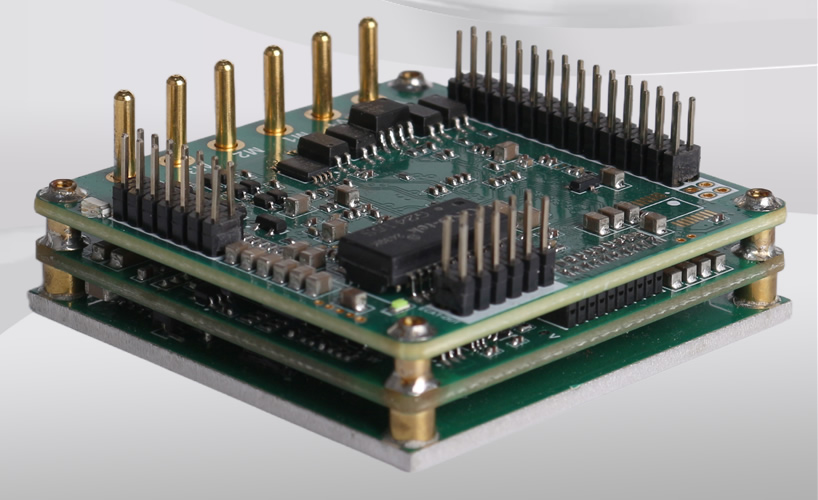
With the continuous and stable development of industrial production, household appliance industry, toy motor and intelligent robot sales market, stepper motor controller control integrated IC has become increasingly common. Stepper motor driver integrated IC is an integrated IC that integrates CMOS control circuit and DMOS power electronic devices. It can be used to form a detailed fitness exercise automatic control system with the main CPU, motor, and incremental servo motor. Can be used for driving AC currents such as brushless DC motors, stepper motors, and automotive relays.
Stepper motor drivers are divided into two types: voltage type and current type. What are the differences between them? How do I know if the integrated IC of the driver is voltage type or current type?
1. Voltage type
Select capacitor filters for DC circuits. During peak soldering (high voltage), the capacitor stores electric field energy, and during valley soldering (low voltage), the capacitor releases electric field energy to fill the gap, thereby maintaining stable DC voltage. A DC circuit is a voltage source, hence it is called a voltage type.
2. Current type
The DC circuit uses a reactor filter. During wave soldering (high current), the reactor stores magnetic field energy, and during valley soldering (low current), the reactor releases magnetic field energy to fill the gap, thereby maintaining stable DC current. A DC circuit is a current source, hence it is called a current type.
Because the load is generally rational, there must be reactive load transmission between it and the switching power supply. Therefore, in the intermediate DC stage, there must be components that buffer reactive load. If large capacitors are used to buffer reactive loads, a voltage source type soft starter is formed; If a large reactor is used to buffer reactive load, a current source type soft starter is formed.
Introduction to the main parameters and characteristics of stepper motors by stepper motor manufacturers
Step distance error
It refers to the difference between the measured step angle and the theoretical step angle when unloaded. It reflects the accuracy of the angular displacement of the stepper motor.
The step distance error of domestically produced stepper motors is generally within the range of ± 10 ′ to ± 30 ′, and high-precision stepper motors can reach ± 2 ′ to ± 5 ′.
2. Maximum static torque
It refers to the maximum external torque that a stepper motor can withstand when a certain phase is constantly powered and in a stationary state, that is, the maximum electromagnetic torque that can be output. It reflects the braking capacity of the stepper motor and the load capacity during low-speed stepper operation.
3. Start torque frequency characteristics
It refers to the correspondence between the maximum step input pulse frequency (also known as the starting frequency) that a stepper motor can accept and the load torque when starting normally without losing step under external load torque.
The starting torque frequency characteristic curve of 90BF002 stepper motor
4. Activate the inertia frequency characteristic
It refers to the relationship between the starting frequency and the moment of inertia when a stepper motor drives a pure inertia load to start.
5. Operating moment frequency characteristics
It refers to the relationship between the output torque and the input pulse frequency during the operation of a stepper motor. When selecting a stepper motor, the operating frequency of the actual application and the operating point corresponding to the load torque should be located below the operating torque frequency characteristics to ensure that the stepper motor operates normally without losing step.
Step by step operation and low-frequency oscillation
When the input pulse frequency is very low, if the pulse period is greater than the transition time of the stepper motor, the stepper motor will be in a step-by-step stop operation state, which is called stepper operation. Stepper motors have a lower natural frequency. When the operating frequency of the stepper motor or the low-speed operating frequency is equal to or close to this natural frequency, resonance occurs, causing the stepper motor to oscillate slowly. This phenomenon is called low-frequency oscillation.
Methods to avoid low-frequency oscillation:
One is to avoid the operating frequency from the natural frequency, and the other is to adjust the damper on the stepper motor to change the natural frequency when the previous method does not allow it.
7. Maximum phase voltage and maximum phase current
They refer to the maximum power supply voltage and maximum current allowed to flow through each phase winding of a stepper motor.